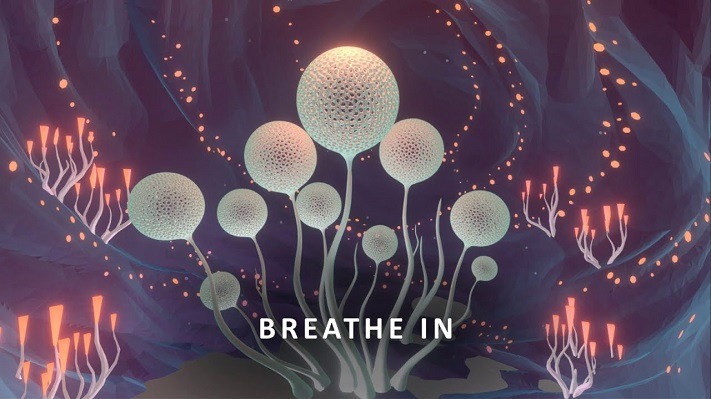Virtual-reality gaming + affordable biofeedback = Anxiety therapy for all?
 Videogame Technology Could Bring Biofeedback Therapy to the Living Room (The Wall Street Journal):
Videogame Technology Could Bring Biofeedback Therapy to the Living Room (The Wall Street Journal):
For decades, use of biofeedback to help sufferers of anxiety, among other psychological conditions, has largely been limited to clinical settings with expensive—and somewhat tedious—medical equipment. Now, with an assist from developers of virtual-reality games, effective therapeutic biofeedback is becoming more affordable, accessible and engaging.
Tests of a new generation of products that combine advances in wearable biometric sensors with the immersive—and fun—qualities of virtual-reality gaming have increasingly demonstrated effectiveness in helping anxious subjects achieve states of calm, among other therapeutic uses.
At a British National Health Service hospital in Torquay, England, a pilot program is under way to see whether one such game can help relieve stress in its front-line medical workers as they cope with the Covid-19 pandemic. A lab in the hospital that explores medical applications of virtual reality has made available to these workers a game called DEEP, in which players wearing sensors and VR headsets move through a simulated undersea world by regulating their breathing…DEEP is just one of the more promising examples of therapeutic biofeedback games, an emerging genre that combines advances in inexpensive wearable sensors—including heart-rate monitors, breath sensors and EEG headbands—with new models of gameplay rooted in psychology.
Recent study:
Efficacy of a Virtual Reality Biofeedback Game (DEEP) to Reduce Anxiety and Disruptive Classroom Behavior: Single-Case Study (JMIR Mental Health). From the abstract:
- Objective: This study aimed to evaluate the effect of a virtual reality biofeedback game, DEEP, on daily levels of state-anxiety and disruptive classroom behavior in a clinical sample. In addition, the study also aimed to examine the duration of the calm or relaxed state after playing DEEP.
- Methods: A total of 8 adolescents attending a special secondary school for students with behavioral and psychiatric problems participated in a single-case experimental ABAB study. Over a 4‑week period, participants completed 6 DEEP sessions. In addition, momentary assessments (ie, 3 times a day) of self-reported state-anxiety and teacher-reported classroom behavior were collected throughout all A and B phases.
- Results: From analyzing the individual profiles, it was found that 6 participants showed reductions in anxiety, and 5 participants showed reductions in disruptive classroom behaviors after the introduction of DEEP. On a group level, results showed a small but significant reduction of anxiety (d=–0.29) and a small, nonsignificant reduction of disruptive classroom behavior (d=?0.16) on days when participants played DEEP. Moreover, it was found that the calm or relaxed state of participants after playing DEEP lasted for about 2 hours on average.
- Conclusions: This study demonstrates the potential of the game, DEEP, as an intervention for anxiety and disruptive classroom behavior in a special school setting. Future research is needed to fully optimize and personalize DEEP as an intervention for the heterogeneous special school population.
News in Context:
- The NeuroGeneration and Humankind’s Quest to Enhance the Brain
- Meditation app Headspace raises $93 million in equity and debt to accelerate clinical validation and geographic expansion
- Large study finds positive yet mixed results from Akili’s digital therapeutic for kids with ADHD
- Five reasons the future of brain enhancement is digital, pervasive and (hopefully) bright
- Can brain training work? Yes, if it meets these 5 conditions
- Three ways to protect your mental health during –and after– COVID-19


